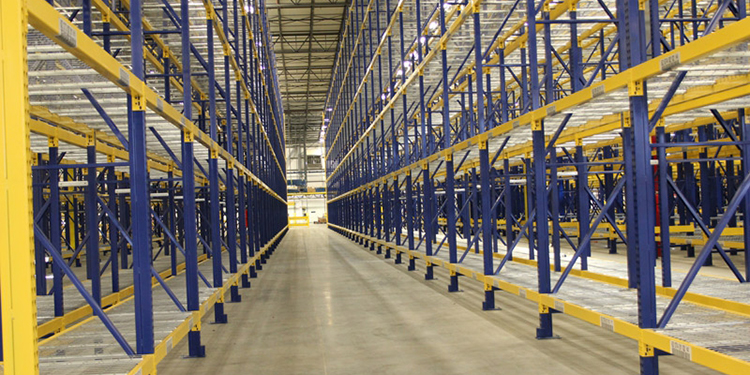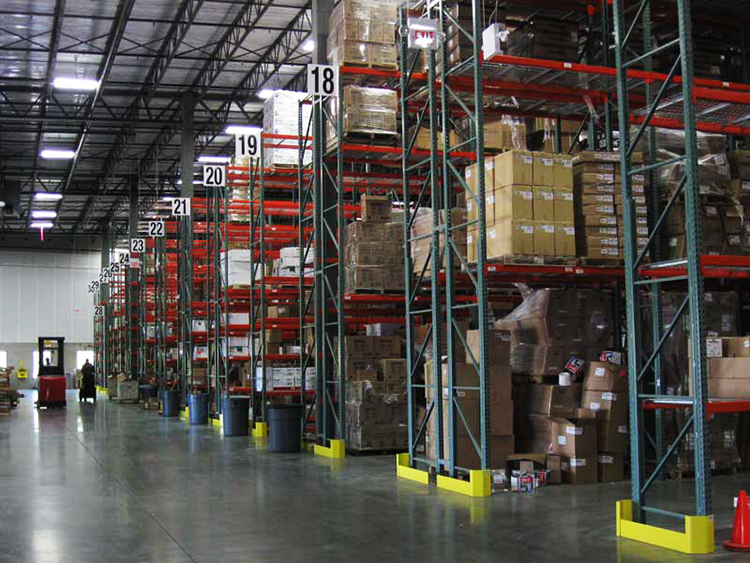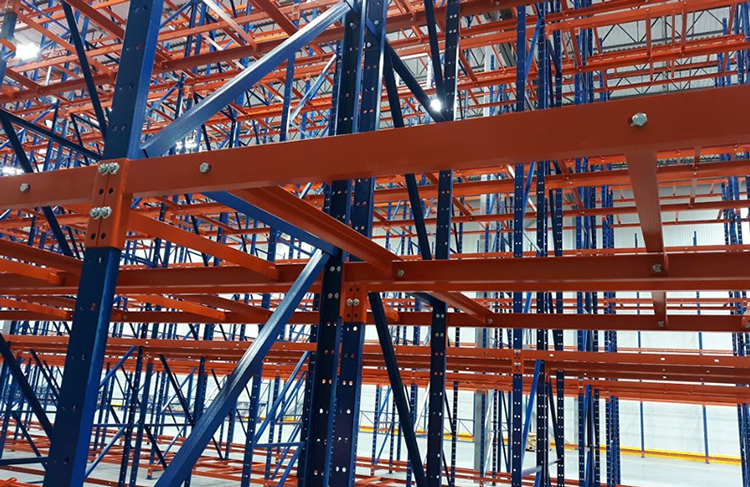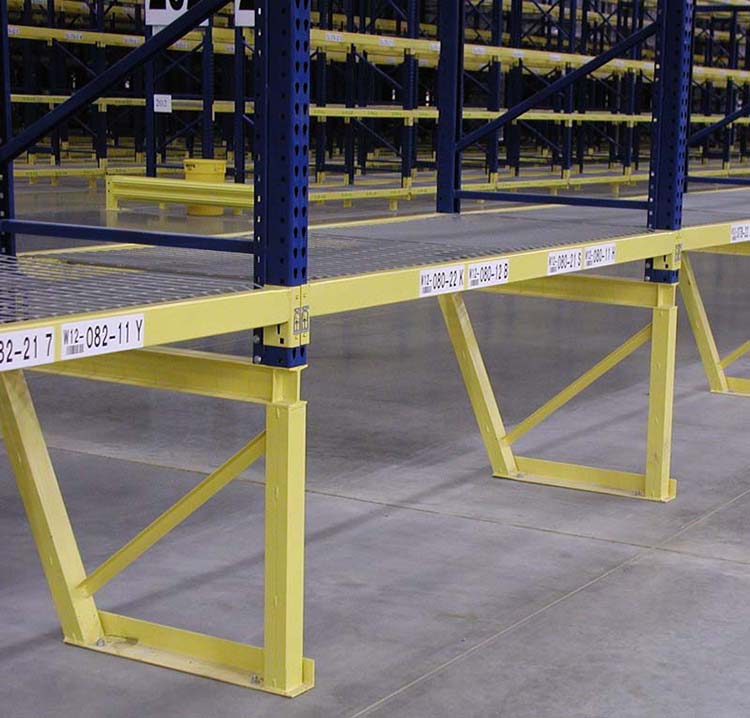The Pros And Cons Of Labeling Load Capacities On Rack Beams

Marking the maximum weight capacity on a pair of beams in a given pallet rack structure can be beneficial to an operation. After all, there are probably multiple labels and tags already adorning the faces of the beams to indicate storage and pick positions. What’s one more mark in a collection of barcodes, numbers, and words? Beam capacity notations, however, can also have their drawbacks. Here, an exploration of the pros and cons of labeling load capacities on rack beams.
The Pros of Labeling Load Capacities on Rack Beams

There are two key reasons why marking the maximum rated load capacity directly on the rack beams can be beneficial.
The information makes it clear to forklift operators what the maximum pallet load weight is that a given pair of rack beams can hold.
Some warehouses or distribution centers have separate racking structures in different areas of a facility, each rated for unique load capacities. Other operations’ pallet racks have beams rated for different capacities on different levels. In both of these situations, labeling load capacities on the rack beams reduces the risk of a load placement error.
In operations where different beam capacities coexist in the same rack structure—such as picking operations—labeling can help operators identify the difference.
For example, a pair of beams measuring 3.5 inches deep might hold up to 3,000 pounds at the picking level. Meanwhile, overhead, a pair of beams measuring 4.5 inches deep might hold up to 5,000 pounds of reserve storage. But from the vantage point of the seat of a forklift, the size difference may not be obvious visually. Labeling rated load capacities on these beams makes it clear which level supports each weight.
The Cons of Labeling Capacities on Rack Beams

Marking the maximum rated load capacity directly on the rack beams can also have its drawbacks. These include:
Placing a label on the beams only tells the operators what the shelf beams can carry.
It does not consider loading limitations of the frame which—if ignored—can result in an overloading situation. Instead, the storage rack load capacity plaques and the load application and rack configuration (LARC) drawings should be referenced for correct rack loading limits.
In operations handling a broad range of inventory, the total weight of a pallet load may vary significantly.
Usually, pallet loads do not bear a label indicating their total weight. If a forklift operator has no way of knowing what a load weighs—because the vehicle lacks fork scales, for example—they may underestimate its mass and place it on beams with insufficient capacity.
If a rack system’s design solely supports uniformly distributed loads, the labeled capacity is predicated on the placement of products evenly stacked on the same pallet type.
Placing an unusually shaped load or a different type of pallet with an inconsistent weight distribution may create a point load—which requires a different beam capacity. Setting a point load onto beams engineered to support only uniformly distributed loads can cause deflection and potential failure.
A pallet rack’s design often accommodates one, two, or three pallets resting on two beams within a single bay.
Yet the maximum capacity marked on the beam may not indicate the total number of pallets it can hold. An operator may mistake the capacity marking as being specific to an individual load rather than to the collective total weight of multiple pallets. This increases the risk of overload.
Depending on the label placement and whether the beam faces the aisle or not, the marking may or may not be visible to an operator.
Because the same size beams are interchangeable—front or back—capacities must be marked on all of them, yet only half of them will be seen. Whether an operation marks the capacities itself or specifies that the rack manufacturer apply the labeling, there is waste associated with the process.
Best Practice: Use of Storage Rack Load Capacity Plaques

Notably, RMI’s American National Standard ANSI MH16.1: Design, Testing and Utilization of Industrial Steel Storage Racks neither requires or forbids the labeling of rack beams with maximum load capacities. It’s up to the discretion of the rack owner or facility operator to determine if marking beams with this information is useful.
ANSI MH16.1 does, however, require the posting of load capacity plaques. Plaques should hang in easily seen locations, as they contain critical details about how much load weight the rack system can safely hold. They also indicate weights and loading configurations specific to each rack. The plaques detail the maximum permissible unit load per level, the average unit load, and total loading expectations for interconnected bays. Further, they note the maximum total load per bay, and the number and spacing of storage levels in the original system design.
For safety, whether an operation marks maximum load capacities on their rack beams or not, never exceed the load limits on load capacity plaques and the LARC drawings.
Best Practice: Ongoing Training

If an operation applies capacity labels to rack beams, it’s important to conduct ongoing, routine training of all personnel. Picking associates and forklift operators should learn what the rack beam capacity marks refer to. They also must understand the type and number of pallet loads permitted in different rack bays. Their instruction should also include review of the purpose of the load capacity plaques, and how to read them.
Want more information about load capacity plaques? Purchase RMI’s ANSI MH16.1: Design, Testing and Utilization of Industrial Steel Storage Racks.


